Last Updated on March 25, 2019
Book-to-film adaptations are enduringly admired across the world, but how are the novels that are made into period dramas for television and film selected? And why are some novels with compelling narratives overlooked in favor of a subsequent adaptation of an old familiar? Guest writer Amy Holley-Cribbin thinks this through with us.
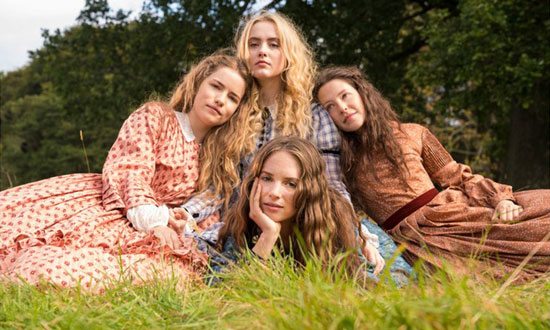
To help keep this site running: Willow and Thatch may receive a commission when you click on any of the links on our site and make a purchase after doing so.
Some novels are repeatedly adapted because an earlier adaptation has resonated with audiences. While the choice to develop a film based on popular regard may seem like a safe bet, it is no guarantee of success: a new adaptation will not reach the pinnacles of success of its predecessor. This might be due to a cultural feeling of fidelity to a given adaptation, such as with Andrew Davies’ 1995 Pride and Prejudice. For countless Jane Austen fans, Jennifer Ehle and Colin Firth perfectly embody Elizabeth Bennet and Mr. Darcy, which puts subsequent Lizzies and Fitzwilliams at a disadvantage.
In the case of the recent BBC MASTERPIECE mini-series of Little Women, the decision to adapt the beloved American classic by Louisa May Alcott once again lay in the fact that “There are only a handful of American books that have resonated with readers for as long as Little Women.” (Rebecca Eaton, MASTERPIECE executive producer.) Despite the 1868 Civil War backdrop, Alcott’s relatable coming-of-age themes make it as relevant today as it was when it was first published in 1868-9.
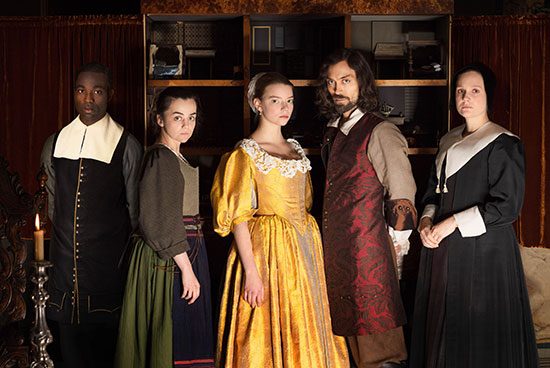
The BBC’s decision to adapt Jessie Burton’s 1686-set debut novel The Miniaturist was also based in the novel’s universal, modern storyline. John Brownlow, who adapted the period drama, told the BBC that in addition to the depth of Burton’s research and “the layers of her characters” he was caught by “the way she wove the most modern of themes into a deep period setting to produce a page-turner of a thriller… What is so special about The Miniaturist is that despite its delicious and unfamiliar period setting, its concerns are absolutely modern: privacy, sexuality, corruption, commerce, hypocrisy, race, public shaming.”
But it wasn’t just the modernity of the novel which captured their attention; it was the story itself. Burton’s narrative of “secrets, intrigue and delicious twists and turns” (Elizabeth Kilgarriff, Executive Producer for the BBC) and her strong characters were major factors in the novel being adapted. Elements like these make a production company willing to step away from what The Telegraph’s Jasper Rees calls the “much loved 19th-century novels on an adaptation rota”.
So what are the main criteria that the novels need to match in order to be adapted for either the big or small screen? And, what makes an adaptation a success?
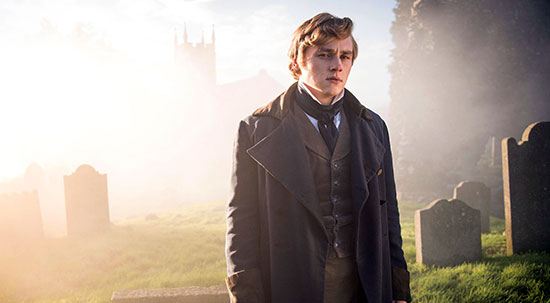
Until the BBC produced this year’s The Woman in White, it had been over twenty years since the Wilkie Collins tale was adapted. From the outside, it is impossible to know if their decision to green-light a less widely known Victorian novel felt like a risky step, but the recent successful productions of Margaret Atwood’s Alias Grace, and Joan Lindsay’s Picnic at Hanging Rock from other producers my have paved the way.
Perhaps the decision was influenced by the response to their own 2016 adaptation of Collins’ The Moonstone, which aired solely during the day time during the BBC #LoveToRead week. The Moonstone was only given a daytime viewing slot at the time, indicating that the Beeb might not have been holding out much hope for its popularity with viewers. It actually proved to be a big success garnering very positive reviews from critics. Had the BBC been able to predict this, might they then have aired the series later on in the day enabling it to reach a wider audience?
Given the enduring success of the films occupying positions on the “adaptation rota,” it seems possible that production companies are not adequately extrapolating information from them in order to widen the canon. This information could also be used to create new period dramas that would rival the soon-to-be-classics like Sarah Waters’ Tipping the Velvet, Michel Faber’s The Crimson Petal and the White or Jessie Burton’s The Miniaturist for instance. Mary Elizabeth Braddon’s Aurora Floyd, Ellen Wood’s East Lynne, and Ouida’s Moths are outstanding Victorian novels full of potential and yet they are an untouched resource as they have never been made into phenomenally successful television or films.
The persistence of certain classics means that there will always be new interpretations, new ‘angles’ to explore through film. These novels will be adapted for decades to come as fresh relevance will be found by different generations living in what might well be a very different society. In her examination of adaptation, A Theory of Adaptation, Linda Hutcheon suggests that the ease with which original sources are approached and then altered is what makes adaptations such a loved phenomenon, that “the real comfort lies in the simple act of almost but not quite repeating, in the revisiting of a theme with variations.”
As such, Hutcheon raises the question of whether the faithlessness of the adaptation process is actually the secret ingredient of its enduring popularity. Therefore, adaptations need to be considered and studied as “aesthetic objects in their own right.”
In recent years, original British period dramas such as the 2008 mini-series The Devil’s Mistress starring Andrea Riseborough and Dominic West, New Worlds (set in England and America in the 1680s), The Mill (a Victorian era mini-series that revolves around the lives of the cotton workers), and the end of the British rule saga Indian Summers experienced great success due to their gripping stories, well-constructed characters, treatment of still relevant social issues and a love story that had the audience on tenterhooks. These features compose the core narrative criteria that identify a successful adaptation, but they also define the qualities of a good book.
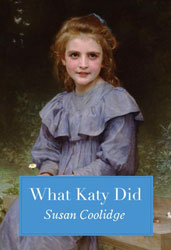 Susan Coolidge’s 1872 children’s book What Katy Did is the only novel from The Katy Books to have been adapted, but never in the 21st century: only a 1999 American movie starring Alison Pill and Megan Follows is available (the 1960s and 70s versions are considered lost). As with Alcott’s Little Women, What Katy Did is an American coming-of-age story with universal themes. The novel explores issues such as being raised in a single parent family, the bereavement of a parent, disability, family life and ambition. Like L.M. Montgomery’s Anne of Green Gables it also features a strong female protagonist in the form of the eponymous Katy and other strong female leads like Katy’s complicated Aunty Izzie.
Susan Coolidge’s 1872 children’s book What Katy Did is the only novel from The Katy Books to have been adapted, but never in the 21st century: only a 1999 American movie starring Alison Pill and Megan Follows is available (the 1960s and 70s versions are considered lost). As with Alcott’s Little Women, What Katy Did is an American coming-of-age story with universal themes. The novel explores issues such as being raised in a single parent family, the bereavement of a parent, disability, family life and ambition. Like L.M. Montgomery’s Anne of Green Gables it also features a strong female protagonist in the form of the eponymous Katy and other strong female leads like Katy’s complicated Aunty Izzie.
Why the BBC, ITV, Netflix, et al, have not picked up on this heart-warming story and it’s highly modern themes yet and adapted the series is a puzzle. The answer may be found in part in Jasper Rees statement that “however much it’s loved, there’s not much point in exhuming the same old story without an up-to-date angle.”(20th April 2018 review of BBC’s The Woman in White). Still, not all fans welcome what they see as modern meddling with the author’s message.
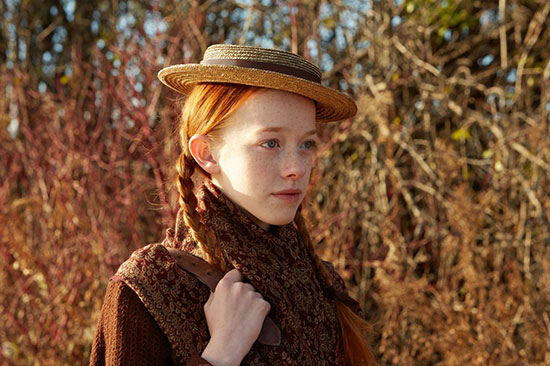
Anne with an E, the most recent adaptation of Anne of Green Gables, received significant pushback from devoted fans of the 1985 mini-series, and some based their judgements largely on a clip that showed Anne to be vastly different from how she had been portrayed in the previous version. Others found that a careful reading of Montgomery’s text suggested that this new Anne reflected the author’s vision, and many who were willing to give the “grittier” interpretation a chance found that it connected them to the source material in a new way.
Adaptations can be just as good, if not better than the original. Adaptation as a process, gives a great story wings, allows it to take flight, to test its metal and it allows its readers to see how high it can fly given the right conditions.
Amy Holley-Cribbin is a writer for Gloucestershire-based creative agency and production company Nomadic Creatives Ltd. She is in the final months of completing a PhD specializing in adaptation theory and Victorian literature. She is a member of NAVSA and has delivered papers at academic conferences at home and internationally. She writes a regular blog reviewing theatre productions, film and TV adaptations, that you can find here.
If you enjoyed this post, you’ll want to wander over to The Period Films List. Also see 10 Reasons to Love Anne With and E, Little Women in Film and Television, and The Miniaturist.



Dawn
October 22, 2018 at 3:55 pm (7 years ago)Interesting question! It’s always puzzled me that Jane Eyre, for instance, has been adapted SO MANY times, while none of Charlotte Bronte’s other novels have. Similarly, Anne of Green Gables has plenty of film and TV versions to speak of but other beloved Montgomery books such as the Emily series or The Story Girl don’t. I hope someone adapts these lovely stories soon!
Madeleine
October 20, 2018 at 5:15 am (7 years ago)Hello! Do you know who is in charge of choosing which novels are worth adapting in a production company?
Willow and Thatch
October 20, 2018 at 9:22 am (7 years ago)There are many different people involved at the different production companies.